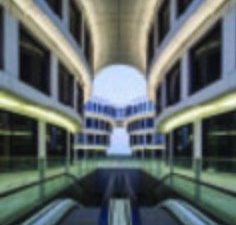Activity hub
July 29, 2017

Downtown Shanghai is a fascinating spectacle – two time-warped cityscapes divided by the snaking Huangpu River. On the west bank, The Bund’s magnificent colonial architecture forms an impressive facade to
Puxi, the rich historic and cultural center, while just across the river futuristic skyscrapers proudly signal the gleaming new metropolis of Pudong.
The younger eastern district has captured the lion’s share of modern business activity, thanks to key infrastructure and financial institutions such as Shanghai Pudong International Airport, the Lujiazui Finance and Trade Zone and two of three Shanghai Stock Exchanges, plus international facilities including the Shanghai World Expo Exhibition and Convention Centre.
But the landscape is set to shift again as a new CBD starts to emerge. Back in 2009, the government began planting seeds for a new international business hub to ease the pressures on Pudong. Fast-forward almost 10 years and the Hongqiao central business district is starting to blossom.
The 33-square-mile zone straddles four neighborhoods to the west of downtown Shanghai – namely the Qingpu, Minhang, Jiading and Changning districts – and has been highlighted in both the 12th and 13th Five Year Plans as a special area of rapid growth.
One of the ambitious aims is to create an economic gateway to the prosperous Yangtze River Delta region, encompassing powerhouse second-tier cities such as Wuxi, Suzhou, Hangzhou and Ningbo. But the area is also being strategically tapped as a new international trade center, with a modern service industry to attract business headquarters and financial organizations, and acres of modern office space in mixed-use developments like the Hongqiao Vantone Sunny World Centre.
Making Connections
Complementing these objectives is the third strategy to harness the area as a major transit hub and facilitate connectivity throughout the rest of China. It’s no coincidence that the CBD takes its name from Shanghai Hongqiao International Airport (SHA); the city’s secondary airport is just ten minutes from Hongqiao’s commercial center and a major part of the area’s appeal.
Primarily a domestic hub (though there are a few international services to destinations such as Korea and Japan operating from Terminal 1), the 80-year-old facility has been given a new lease on life recently with a planned series of soft upgrades.
In March, Terminal 1 unveiled a revamped Building A, with updated check-in areas plus more retail and F&B options, while further upgrades are due to be revealed in Building B and Terminal 2 by 2018. The Shanghai Airport Authority also announced it will build a new hangar facility for business jets at Hongqiao airport by April 2018 to cope with the rising demand.
Beyond air links, a key component in enhancing the region’s transit prowess was the creation of the Hongqiao Transport Interchange (HTI), or Hongqiao Transit Hub, which opened in time for the 2010 World Expo. This is the world’s largest multimodal transportation center, connecting air, rail, road and subway in one giant facility.
The complex directly links the domestic Terminal 2 of the airport with Shanghai Hongqiao Railway Station – which operates three high-speed rail lines to Beijing, Hangzhou and Nanjing, as well as two metro lines (Lines 2 and 10) to downtown Shanghai and surrounding areas.
The strategy is working, according to John O’Shea, Langham’s Cordis brand vice president and managing director of the upcoming Cordis Hongqiao. “A lot of corporations are basing themselves here,” he says. “Where Cordis will be opening, Roche and Shell are going to be headquartered, and HSBC is opening up offices too. Many are moving out to Hongqiao just for the convenience of being able to get to places very quickly.”
The Shanghai Daily reported that more than 650,000 employees are expected to work for enterprises based in the zone by the end of 2020. To accommodate professionals from both home and abroad, a number of residential communities have been planned and locals are viewing the potential housing boom eagerly.
“If you have the money, now is the perfect time to invest,” advises Elyn Hu, Sofitel Shanghai Hongqiao’s director of sales and marketing. “Residential sales of apartments are going up – three years ago the sale was about RMB40,000 [$5,795] per square meter, now it is RMB78,000 [$11,300] per square meter as confidence in the region grows and we see more residents.”
Entire the MICE
The opening of the Shanghai National Exhibition and Convention Centre (NECC) – in stages from September 2014 to June 2015 – was a watershed moment for the area. The enormous, silver four-leaf clover structure is the largest single-building event space in the world at nearly 16 million square feet. Indoor space includes 13 large exhibition halls, three small halls, more than 60 meeting rooms of differing size and a commercial center providing additional support in the form of VIP lounges, F&B facilities, entertainment and boutique shops.
Some of China’s biggest annual shows have already shifted from Pudong to the NECC. In 2015, for example, a total of 928,000 visitors came to Auto Shanghai, the 16th Shanghai International Automobile Industry Exhibition, with more expected at the event’s 17th edition which took place in May.
The unusual clover shape of the NECC is both an architectural statement and a nod to the green initiatives that are being applied to the area, with the government committed to transforming the entire CBD into a low-carbon and green construction community.
Another example of this is the modern glass-fronted, mixed-use project being built directly opposite the NECC – the Hongqiao World Center development from the Greenland Group, which has achieved LEED Gold certification. When complete, the development will house the five-star Primus and four-star Qube hotels, plus a luxury serviced residence, shopping center, office space and other support facilities for the exhibition center.
By Tamsin Cocks




